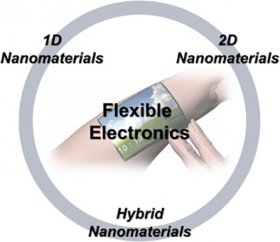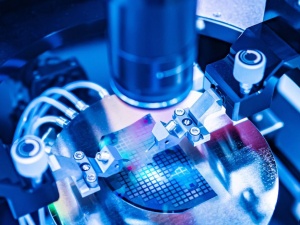Flexible Electronics: Recent Developments and Applications
Skin‐Inspired Electronics and Its Applications in Advanced Intelligent Systems

Recent interdisciplinary progress in flexible materials, devices, and system designs has brought about an emerging paradigm of skin‐like multifunctional electronic platforms named skin‐inspired electronics. Featured with excellent flexible mechanical properties, thin and conformal devices, and integrated sensing functions similar to those of human skin, skin‐inspired electronics exhibit great potential in the application fields of wearable electronics and human–machine interfaces. Many real‐world implementations of the intelligent system of skin‐inspired electronics in healthcare monitoring, artificial prosthetics via the creation of sensitive skin, and robot tactile perception are demonstrated. Combined with the technologies of wireless data transmission, self‐powered supply modules, and signal‐processing circuits, skin‐inspired electronics are expected to achieve improved portability, multifunctional integration, on‐site analysis, and in‐time feedback. In this review article, recent advances in skin‐inspired electronics, its promising solutions to engineering challenges, and opinions on future research directions are discussed.
Flexible Electronics Based On One‐dimensional and Two‐dimensional Hybrid Nanomaterials

Research on flexible or wearable electronics has been grown remarkably due to the advent of nanomaterials, such as metal nanowires, graphene, or transition metal dichalcogenides. Although each nanomaterial has mechanical and electrical characteristics that can be applied into flexible electronics, the limitations of each nanomaterial are also clear. In order to overcome the limitations of these nanomaterials, research on the hybrid structures of nanomaterials has been extensively conducted. In this review article, the properties of one‐dimensional nanomaterials, two‐dimensional nanomaterials, and their hybrid nanomaterials are introduced. In addition, information concerning various flexible electronics based on these nanomaterials is provided.
Development of Flexible Li‐ion Batteries for Flexible Electronics

Herein, a critical review on the recent development of flexible lithium‐ion batteries (FLIBs) for flexible electronic devices is provided. The innovative designs of cell configuration for bendable and stretchable FLIBs, selection of active materials, and evaluation methods for FLIBs are discussed. The grand challenges for FLIBs are energy density and scale‐up fabrication as demonstrated in the review. Furthermore, the lack of quantitative evaluation methods for FLIBs' performance and nondestructive tools to probe the mechanical degradation may significantly hinder the development of FLIB technologies. Perspectives for future research directions, based on the current state of progress, are discussed.






